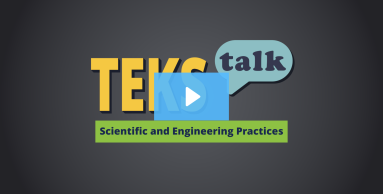
Knowledge and Skills Statement
The further explanation is designed to be a resource for educators that helps them better understand the topic their students are learning. Further explanations may be written at a more complex level than would be expected for students at the grade level.
A typical structure for a discussion is Claim-Evidence-Reasoning (CER). A claim is an answer to a scientific question stated as a fact. Students gather evidence to support their claims. The evidence should justify the accuracy of the claim and include data points, scientific observations, or a summary of data. Multiple sources should support the evidence. The reasoning connects the claim and the evidence logically. It should also explain why the claim is reasonable based on scientific ideas and principles.
Scientists develop and defend their explanations in collaborative discussions with peers (other scientists and engineers) using evidence based on a preponderance of data. Engineers collaborate with their peers through the design process, evaluating others and justifying their own solutions using the design criteria and evidence.
Research
Frejd, Johanna. “When Children Do Science: Collaborative Interactions in Preschoolers’ Discussions About Animal Diversity.” Research in Science Education 51, no. S1 (February 2019): 21–42. https://doi.org/10.1007/s11165-019-9822-3.
Summary: In this article, the author presents a study on the benefits of Early Childhood students collaborating during scientific discussions. The study found that students interacting and conversing with their peers during these activities increased engagement and encouraged students to make comparisons and collaboratively solve problems.
